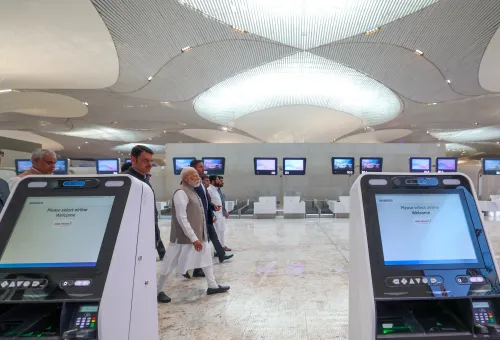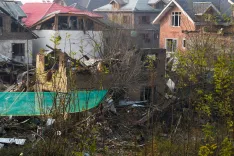Is Delhi-NCR Becoming a Gas Chamber as AQI Surges Past 400?

Synopsis
Key Takeaways
- Severe pollution levels recorded in Delhi-NCR.
- Current AQI exceeds 400, affecting health.
- Government has imposed restrictions on construction and other activities.
- Stubble burning is a significant contributor.
- Residents advised to limit outdoor activities.
New Delhi, Nov 15 (NationPress) The Air Quality Index (AQI) in the Delhi-NCR region has once again fallen into the 'severe' category as residents are greeted with another morning of suffocating smog. The Air Quality Early Warning System (EWS) indicated an AQI of 386, while private monitoring service AQI.in recorded it even higher at 470.
This level of pollution is akin to inhaling the equivalent of 12 cigarettes each day, severely impacting lung health. A dense layer of fog enveloped the city, obscuring visibility of buildings and major thoroughfares.
Measurements from the Central Pollution Control Board (CPCB) reveal that multiple locations within the metropolis reported 'very poor' or 'severe' pollution levels. Notable readings include Ashok Vihar at 415, CRRI Mathura Road at 365, and Bawana at 441, among others.
The Early Warning System logged an AQI of 386 at 5:30 AM, with discrepancies attributed to varying monitoring parameters and locations.
In light of the ongoing high pollution levels, the Commission for Air Quality Management (CAQM) has sustained Stage III of the Graded Response Action Plan (GRAP) throughout the Delhi-NCR.
Measures under this stage involve restrictions on construction activities, brick kilns, stone crushers, and other operations that contribute significantly to pollution.
Additionally, the Supreme Court has mandated the governments of Punjab and Haryana to provide updates on efforts to mitigate stubble burning, a primary contributor to the pollution crisis in the Delhi-NCR region.
A bench led by Chief Justice of India (CJI) B.R. Gavai, which has been observing initiatives to combat air pollution in the area, has acknowledged reports indicating deteriorating conditions despite the enforcement of the GRAP.









